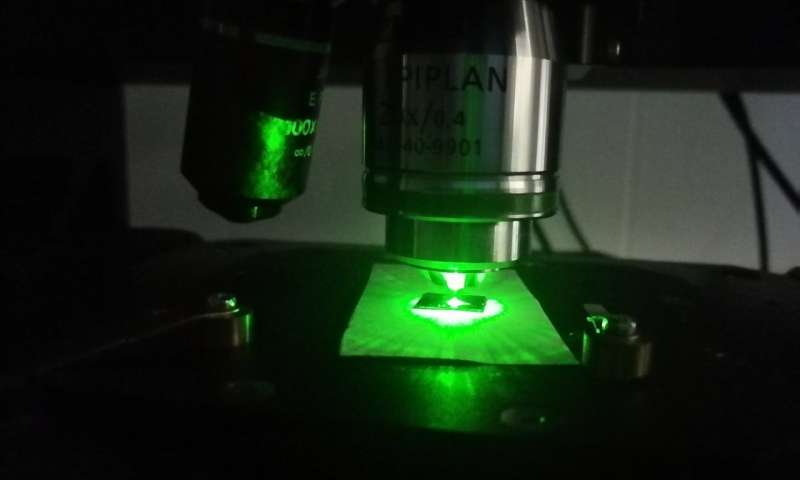A University of Córdoba research group has designed a tool that enables detection of antidepressants in urine samples in low concentrations. This new method is uses a newly developed material based on carbon nanotubes on the inside of pipette tips normally used laboratory analysis.
By incorporating carbon nanoparticles, the polymer properties are enhanced and the ability to adsorb increases, making it fast and easy to extract antidepressants from urine. Beatriz Fresco Cala headed the research, coordinated by Professor Marisol Cárdenas, who is also in charge of the FQM-215 research group. Cárdenas says the pipette tips that were modified with this hybrid nanomaterial provide a very stable and easy-to-use system to carry out these kinds of analyses.
She explains that when the sample goes through the pipette tip, the antidepressants remain on the surface of the synthesized hybrid nanomaterial. Next, they elute with an organic solvent, increasing their concentration and efficiently eliminating any possible interferences, which enables researchers to determine the amount of antidepressants even in small amounts.
Cárdenas says that this method has considerably improved the analytical properties of the measuring process used to date. It is simpler, cheaper, and thus more competitive.
This kind of analysis is done for the most part in hospitals, though it could also be done in any laboratory. As Cárdenas explains, the tests can be used to track dosages, though they are more useful for cases of intoxication by means of overdose or at a forensic level.

Microscope analyzing a sample with the use of nanoparticles. Image: University of Cordoba
The more sensitive the measurement process is, the lower the quantity of the component needed (toxic, contaminant or protein). According to Cárdenas, this has two advantages. The first is being able to determine the presence of the drug even when it has been in the sample for a long time. For instance, excretion of a drug can take between 24 and 48 hours, or even longer. So the greater the time period since ingestion, the lower the concentration. This test makes it possible to detect the drug after a long interval of time. Higher sensitivity means that it can be detected during a longer period of time than using conventional techniques.
The second advantage concerns the field of diagnosis and early detection of disease. Generally speaking, these processes have markers whose concentration increases as a disease progresses. The lower the concentration a marker can be detected with, the earlier a disease can be diagnosed.
The specialization of researcher Cárdenas’s team in the development of nanotools to improve analyses led another member of the group, Ángela López Lorente, to develop a new improvement in the equipment used in vibrational spectroscopy techniques. This study aims to obtain information on the vibration of the bonds between molecules by identifying the composition of the material.
The researchers used silver and titanium dioxide, which intensified the signal of the sample, providing more information about its components. Nanoparticles of both metals are placed on a silicon surface with the sample. Once the sample interacts with the metal nanoparticles, the analytic signal is 10,000 times higher. This makes it easier to detect lower amounts and characterize the components. This method, according to López Lorente, can be applied in medicine, protein analysis, and contaminant detection, to name but a few.
Source: University of Córdoba




